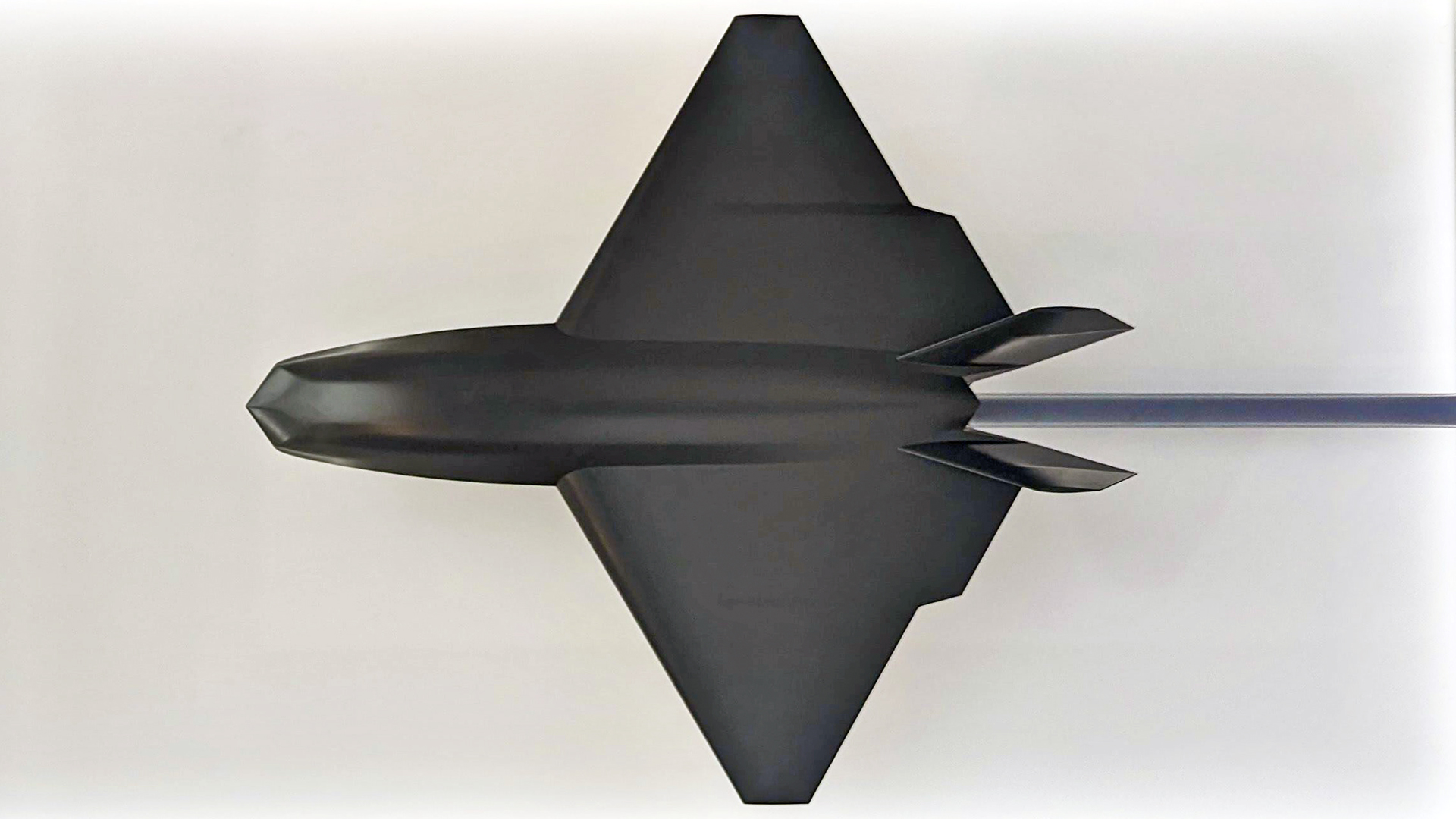BAE Systems has unveiled a new design configuration for its “Concept 2” uncrewed aircraft, which was first revealed in 2022. The platform forms part of the company’s vision for integrating uncrewed systems into future air combat operations, and is designed to assist crewed fighters in a variety of ways.
A sub-scale model of the revised design was recently revealed at the World Defense Show in Riyadh, Saudi Arabia, and was first reported on by FlightGlobal. According to an existing product card, BAE’s Concept 2 platform constitutes a “medium-size UAS [uncrewed aerial system] designed to substitute or augment existing forces in the attack, ISR [intelligence, surveillance, and reconnaissance] and control of the air roles of air power.” The company hopes to conduct its first flight within two years.
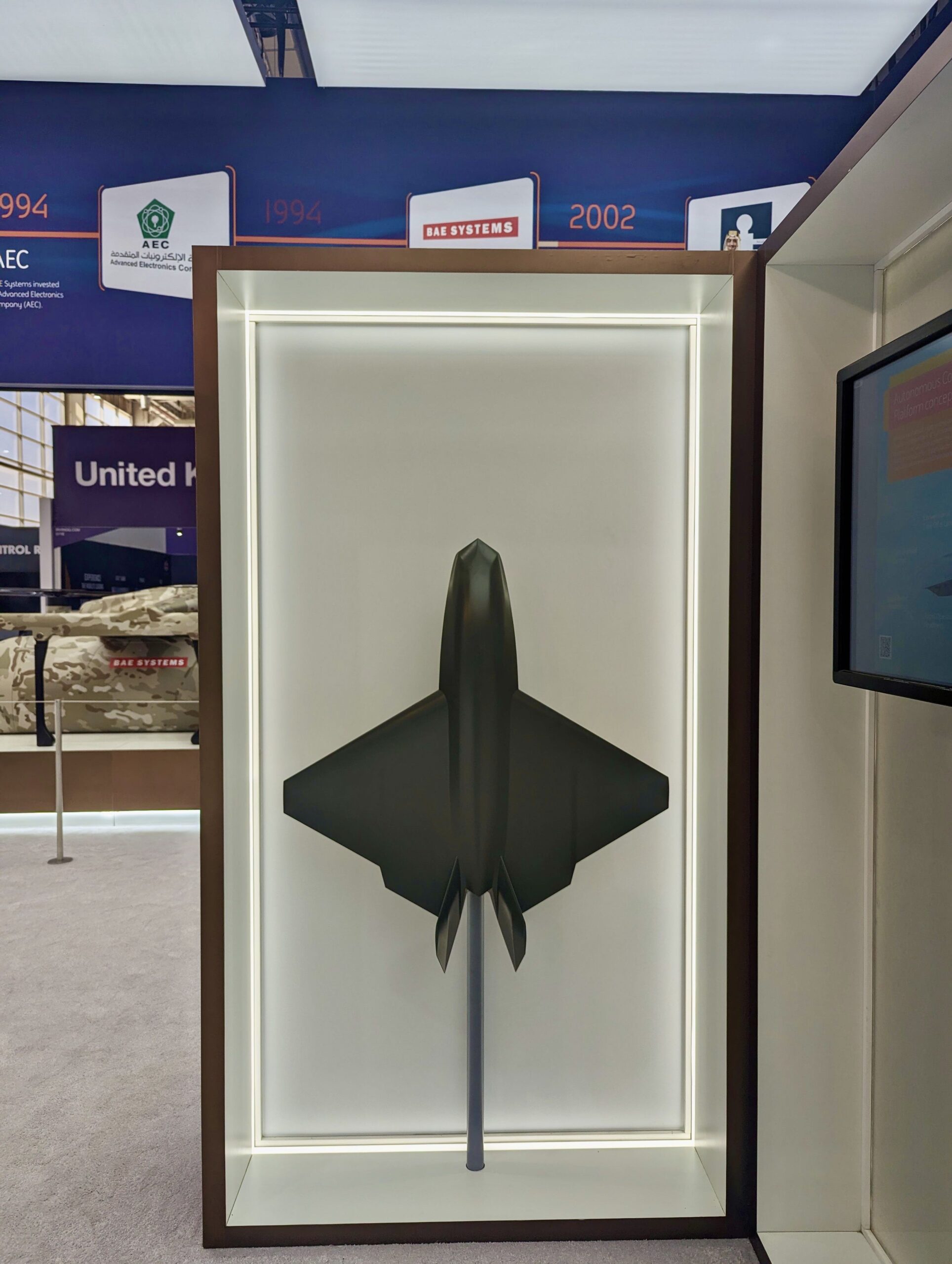
“We have been carrying on our many decades of investment in uncrewed systems, and are displaying our latest iteration of an ACP [Autonomous Collaborative Platform] concept,” Steve Reeves, head of business development and strategy (platforms) at BAE’s FalconWorks technology accelerator, told FlightGlobal at the event.
The new design boasts a single engine and a modified diamond-shaped delta wing with extensions toward the inner trailing edge. Its shovel-like nose and wing combination are somewhat similar in appearance to Northrop’s YF-23A. The rear fuselage features angled vertical tails, with the engine exhaust nestled deeply between them. The extension on the rear of the wing may provide additional pitch control considering the aircraft has no horizontal stabilizers. Its size is reportedly similar to that of BAE’s Hawk jet trainer.
As Reeves noted, “what you see here is a more optimized design… from a [low observable] perspective [meant to]… enhance the characteristics of the aircraft” compared to the original concept for the platform unveiled in 2022.
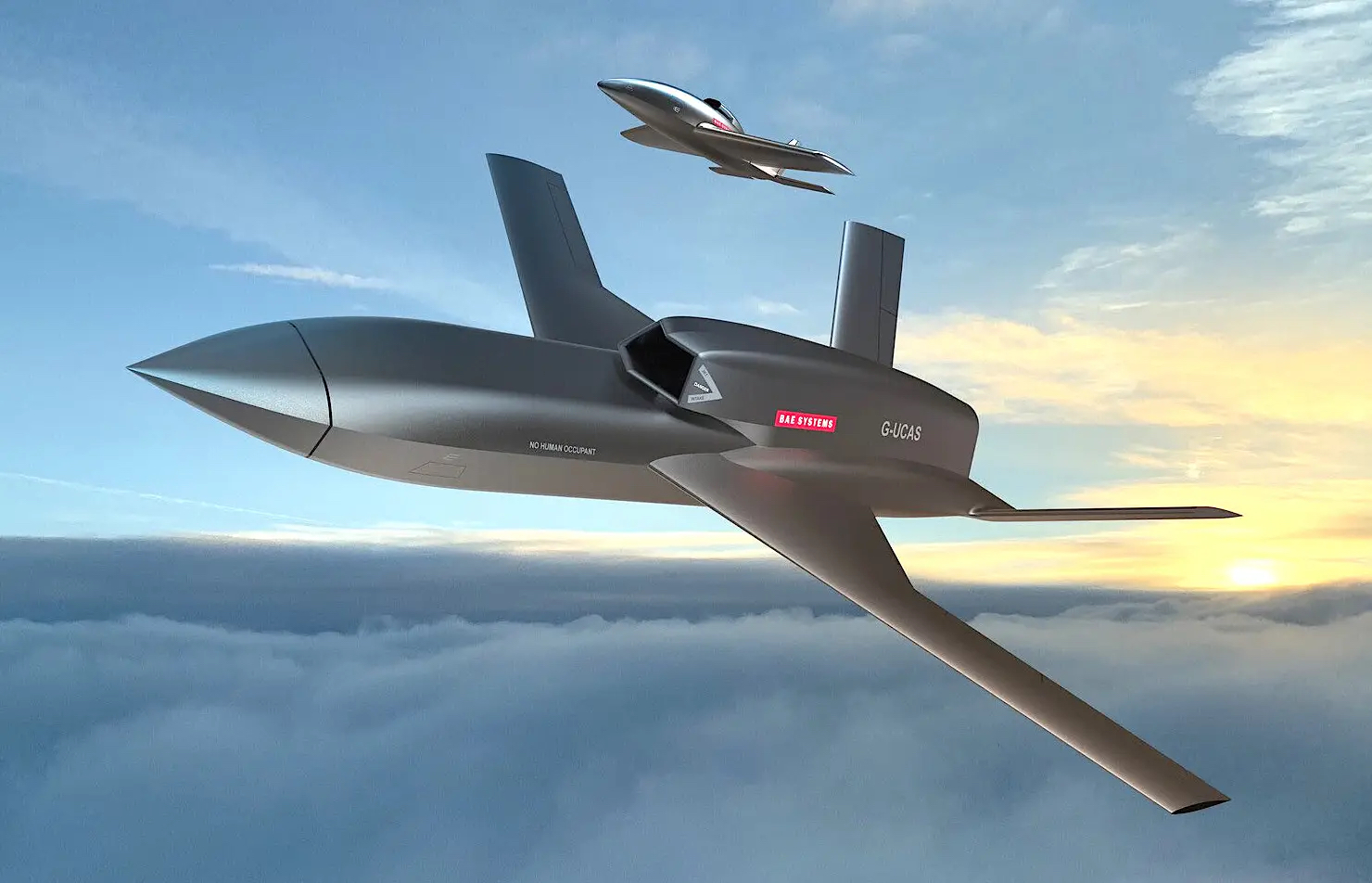
That original concept was revealed by BAE at the Royal International Air Tattoo (RIAT) at Fairford in the United Kingdom, in July of that year. As we noted at the time, it sported ‘lambda’-like swept wing and a splayed v-tail, and also featured a very prominent dorsal air intake on top of the fuselage. Outwardly, that concept looks very much in line with other lower-end UCAV-like designs of other companies; including Lockheed Martin’s Tactical Expendable-Combat Air Vehicle (TE-CAV) and Kratos’ XQ-58A Valkyrie.
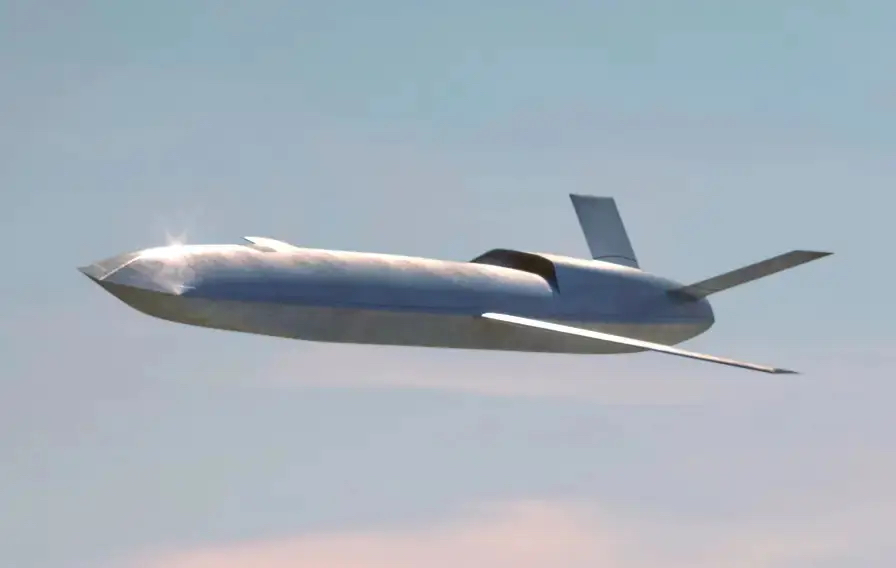
The “real driver” of the design change between then and now was the need to “generate affordable combat mass” because “the price point is going to be so important for our customers,” Reeves revealed.
Previously, it was specified by BAE that Concept 2 was to be “attritable, but designed for 100+ sorties.” As The War Zone has noted in the context of uncrewed aircraft, ‘attritable’ usually refers to systems that are inexpensive enough that they could be used on high-risk missions from which they may not return, but at the same time are capable enough to be relevant for said missions. In recent years, the term ‘affordable mass’ has increasingly been favored by some services, notably the U.S. Air Force, and the notion of ‘affordable mass’ is very much something the U.K. military is moving towards, too.
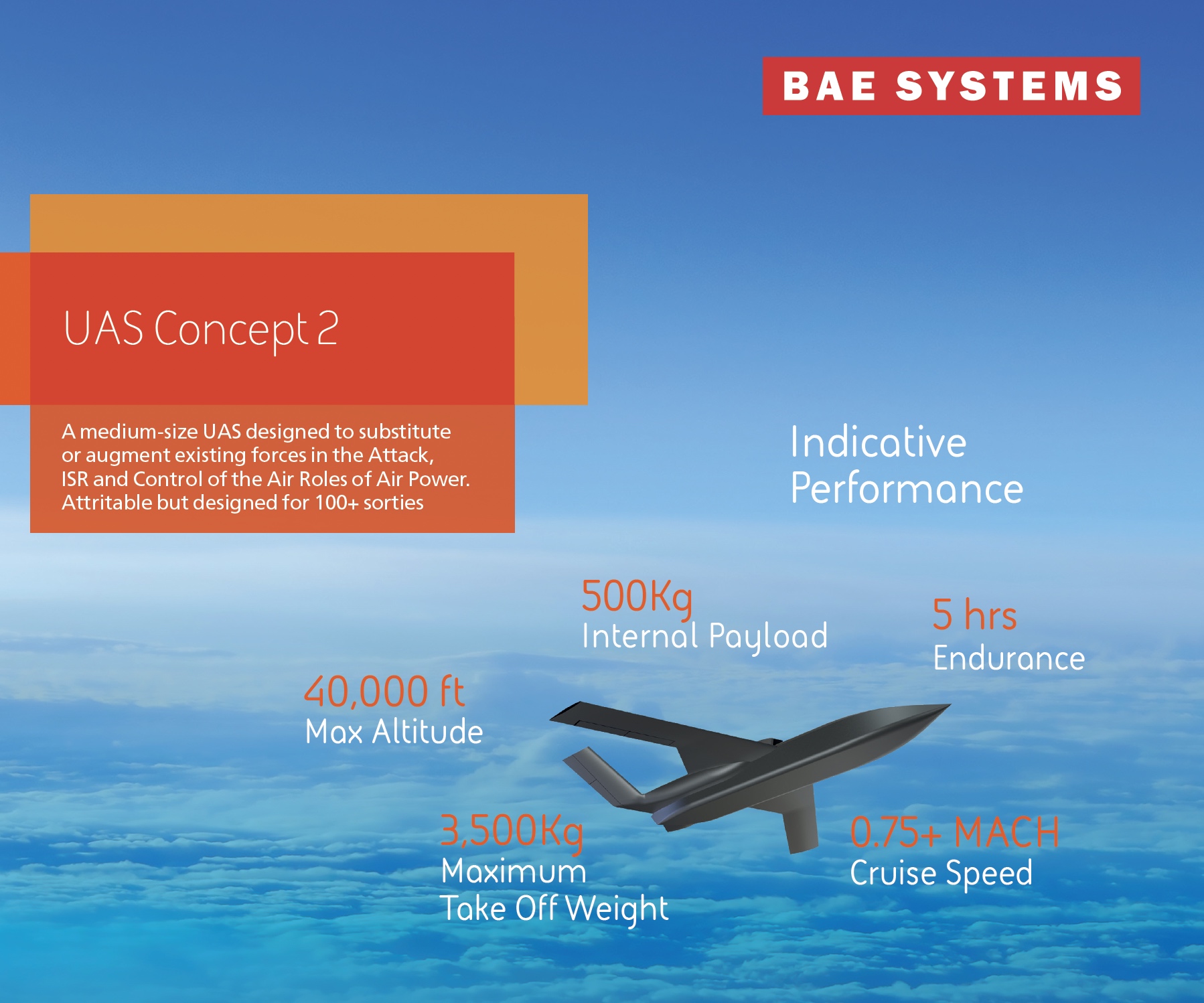
Based on the 2022 basic specifications, which could have changed with the redesign, the drone is envisioned having a maximum takeoff weight of 3,500 kilograms (7,716 pounds) and will be able to carry various payloads. As we noted previously, these can include sensors and electronic warfare suites. BAE has previously indicated that it may feature a possible air-to-air combat load of two beyond-visual-range Meteor air-to-air missiles or an air-to-ground one with four SPEAR 3 mini cruise missiles. According to FlightGlobal, the updated concept features two internal bays which could be used to carry air-to-surface and air-to-air weapons.
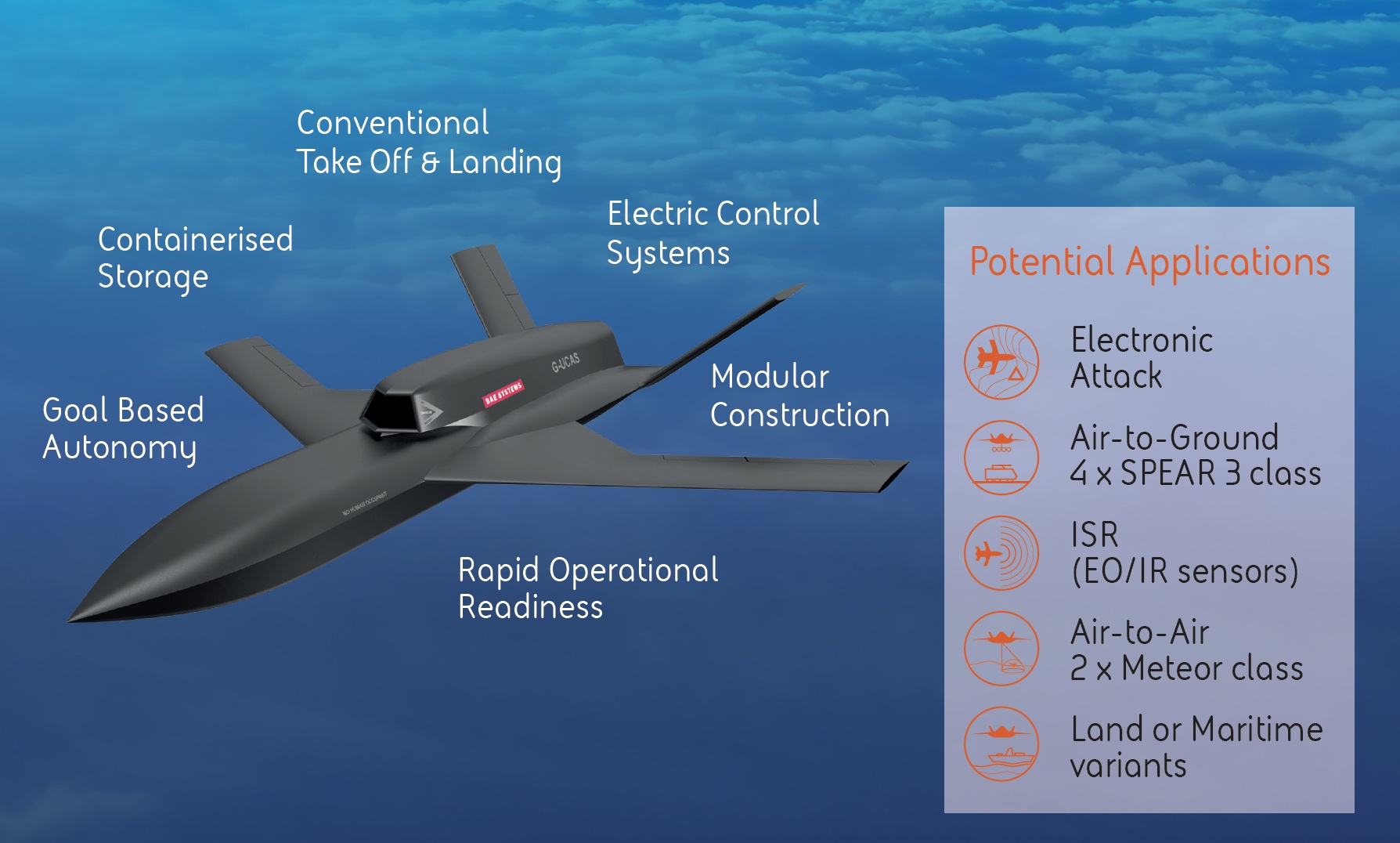
Endurance and range relevant to the fighters it will assist, as well as other missions, is a focus of BAE’s design. “We think that the ability to operate at range is important, with the ability to loiter for several hours,” Reeves noted.
BAE Systems says the drone is being designed to be stored within a container for rapid deployability.
In addition, it will fly at subsonic speeds and altitudes similar to the fighters it can integrate with. The system is intended to also feature what BAE calls “goal-based autonomy,” meaning that it can carry out specific orders without further direct human interaction thanks to the integration of artificial intelligence (AI).
However, in order to advance the development of the drone, and ultimately be able to offer it to potential clients, external support is needed. Up to this point, its development has been fully funded by BAE money.
“We have a program laid out until it gets to first flight within two years. To take the program much further, we are going to need a partner to help us develop the program, and develop it in the right direction,” Reeves signaled. The pace of said development will “depend on customer investment,” he said.
“We are actively looking for industrial partners to be able to come on board, so that we can produce the very best product in the best timescale.”
For BAE, the aircraft will likely appeal to “most air forces around the globe… because of its size and range.” The company also sees it “working in close harmony with current fast jets such as [the Eurofighter] Typhoon and the next generation of aircraft that come along” as part of broader crewed-uncrewed teaming in future operations. This, it should be noted, also includes the smaller, expendable “Concept 1” UAS. That system, which you can read more about here, is designed to operate singularly or as part of a networked swarm which would include Concept 2.
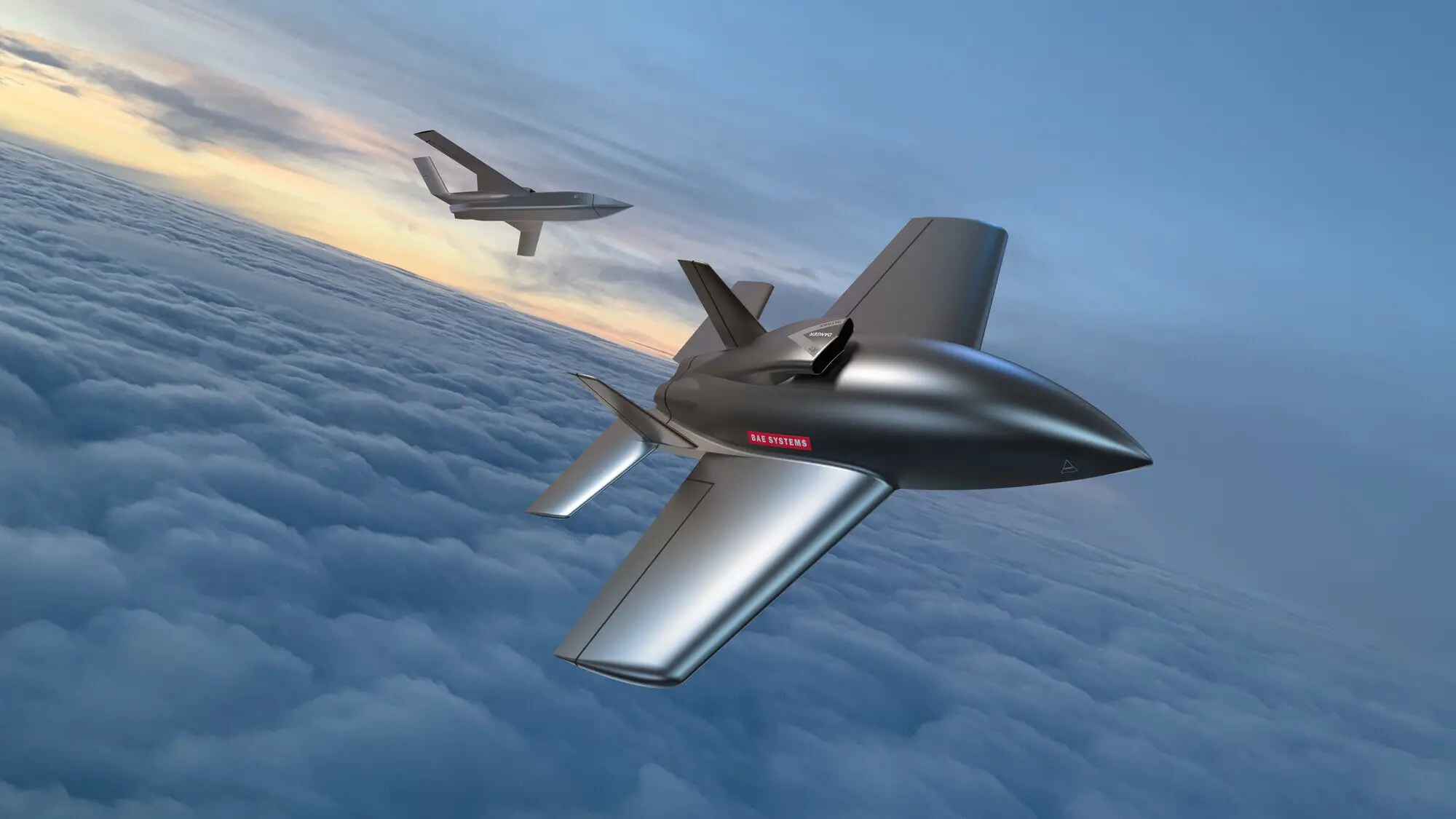
While there has not been specific mention of particular customers for either platform by BAE, it is likely that the U.K.’s Royal Air Force is one of the users the company has in mind. Notably, BAE Systems heads up the development of the U.K.’s Tempest next-generation fighter, which is at the heart of the British Future Combat Air System (FCAS) architecture. The British FCAS, not to be confused with the European program of the same name, will also include other complementary technologies, among them ‘loyal wingman’ type drones. BAE’s Concept 1 and Concept 2 uncrewed systems would likely be seen as natural candidates for the program.
Saudi Arabia, where the expo that the updated Concept 2 was displayed, is also a major operator of the Eurofighter Typhoon, and the Royal Saudi Air Force is always very aggressive about modernization. A loyal wingman drone with low-observable characteristics could drastically expand the capabilities of the Kingdom’s fighter aircraft and provide entirely new ones as well. It could offer some stealthy capabilities at a far lower cost compared to stealth crewed aircraft, for instance. This is just one example of a foreign partner which could take high interest in a system like this.
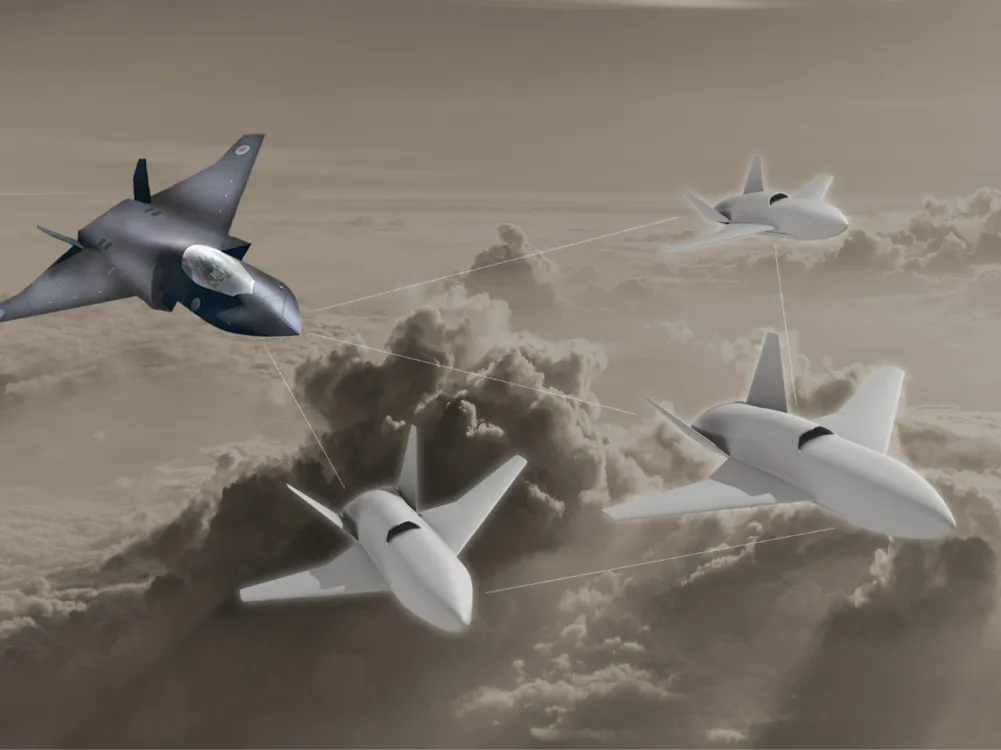
The U.K. Royal Navy is also exploring carrier-based drones for use on its Queen Elizabeth class carriers as part of Project Vixen. BAE’s product cards say that both Concept 1 and Concept 2 could include maritime, as well as land-based variants, making the service another potential customer.
This all comes as the U.K. Ministry of Defense is poised to publish an ACP strategy document in the near future, based on the requirements of both the RAF and the Royal Navy; the former of which has invested considerable energy into drone initiatives such as the Lightweight Affordable Novel Combat Aircraft (LANCA) program in the recent past. As the RAF’s Chief of the Air Staff, Richard Knighton, noted back in July 2023:
“We are focusing work in the near term on the underpinning technology and operational analysis for our Autonomous Collaborative Platforms (ACPs). The lower cost of these platforms, particularly the ‘Tier 2’ attritable platforms, seem likely to offer greater mass and innovative ways of delivering effects that will enhance the capability of our crewed systems. We are creating an ACP Strategy with the Royal Navy, which I expect we will publish soon. The portfolio approach we are adopting will allow the rapid introduction of new air vehicles and payloads to iteratively exploit technology.”
BAE’s initiative fits within a larger trend for similar advanced drone teaming systems emerging around the globe. The U.S., in particular, sees the acquisition of future Collaborative Combat Aircraft (CCA), which constitute artificial intelligence-loaded and weaponized uncrewed vehicles loosely akin to the ‘loyal wingman’ concept, as critical to developing the ‘affordable mass’ needed to counter major threats — China in particular.
Officially, the Air Force has disclosed that it wants at minimum 1,000 CCAs to augment its future fleet of around 200 Next-Generation Air Dominance (NGAD) combat jets and 300 F-35s. However, it’s likely that the figure could be considerably larger. Five prime contractors are currently working on the CCA project with the USAF. BAE Systems is not one of them.
Still, the U.K.’s RAF and air forces around the globe will have a need for systems like Concept 2 in the near future to bolster their increasingly costly and dwindling fighter inventories. BAE Systems’ collaborative tactical drone could step in to service that demand, if it moves forward beyond internal development.
Contact the author: oliver@thewarzone.com
